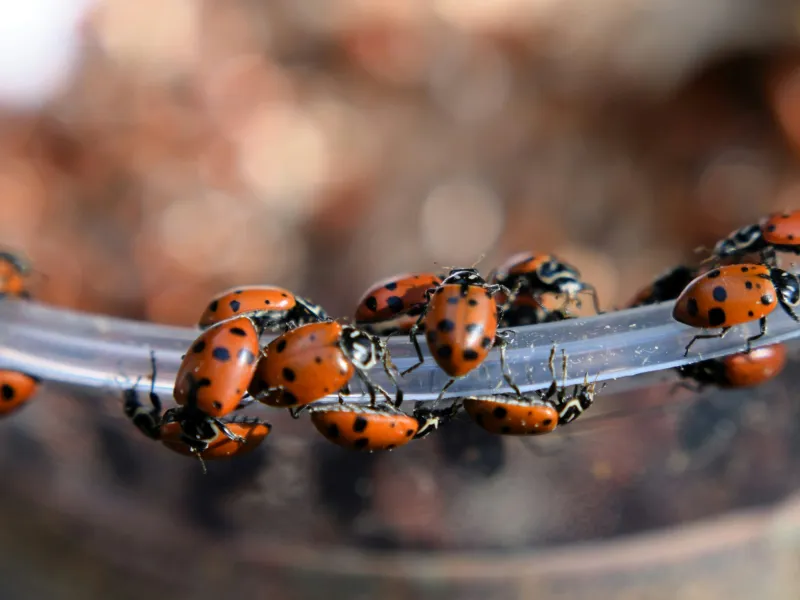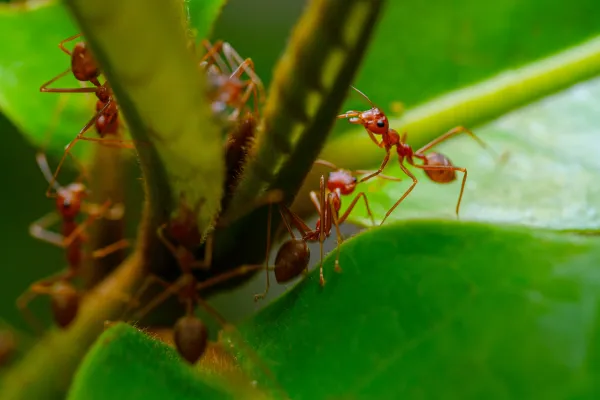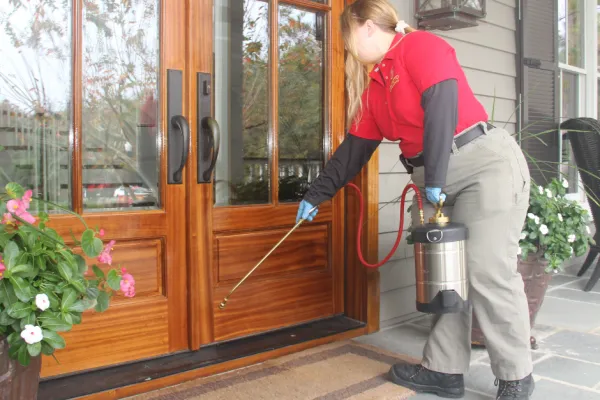Common Fall and Winter Pests

Although summer is wrapping up, homeowners must stay vigilant regarding pest prevention and control. While many pests disappear during the cooler months, some will try to enter your home to seek protection from winter weather. Keep reading to learn about common fall pests.
Common Fall Pests
Cockroaches - These unsettling pests thrive in warm, humid environments. Therefore, your warm home is a perfect place for them to overwinter. Having cockroaches infiltrate your home is something you want to avoid. These highly unsanitary creatures are associated with no less than 33 distinct bacterial strains, responsible for a wide range of illnesses, varying from minor to severe. Additionally, they are notorious for transmitting various types of parasitic worms to humans and pets who come into contact with them. Thanks to our mild winters, cockroaches remain active throughout the year and are ready to reproduce and cause household troubles when spring arrives.
Ladybugs - Ladybugs, ladybeetles, or ladybird beetles are the best-known beneficial predatory insects. Over 450 species are found in North America. Some are native, and some have been introduced from other countries. These brightly colored insects survive winter by entering your home through tiny cracks and crevices. Ladybugs release pheromones like perfume to attract other ladybugs from up to 400 meters away. So, once they find a cozy place, they'll send for their friends and gather in large numbers in a sunny area. The best treatment for ladybugs is prevention! Seal up cracks and holes in your home's siding, eaves, and trim to prevent them from moving in.
Ants - Ants, more than many other pests, are keenly interested in your food. Items such as bread, cereal, pastries, fruit, and nuts contain the necessary nutrients that support ant colonies in their quest for survival. Upon entering your home, ants typically take small portions of available food and transport it back to their nearby colonies. In cases where an ample food supply and convenient access are present, ants might even establish colonies within a home to expedite their access to the food source. To stop these ferocious feeders, transfer any food in paper, cardboard, or plastic to airtight storage containers. Fruits, vegetables, and bread should be stored in the refrigerator whenever possible. Any food source stored uncovered and out in the open is a prime target for ants.
Spiders - The American house spider is the most common spider active during fall. These spiders are often observed within homes, sheds, garages, and other structures. You'll often find them high in corners, under furniture, and in other dark, hidden places. Although they typically live peacefully with humans, if they feel threatened, they can be aggressive. They will generally only bite if provoked or threatened. The American house spider bite feels similar to a mild bee sting and may become red or cause swelling. In some more severe cases, nausea and dizziness may occur. Other spiders, you may see, in the Lowcountry are the pantropical jumping spider, Carolina wolf spider, orb weaver, twin-flagged jumping spider, and more.
Stink Bugs - These insects were accidentally introduced to Pennsylvania from Asia in 1998, and there is no mistaking them for anything else. Adults have a wide, shield-like body shape that can reach two centimeters long and are often as wide as they are long. While stink bugs aren't typically harmful to pets or humans, they have been known to produce an allergic reaction in those who are sensitive to their defensive insect odors, according to Pennsylvania State University. These bugs feed on fruits, including apples, figs, and peaches.
Boxelder Bugs - Like other insects, boxelder bugs enter your home through tiny openings in hopes of surviving winter in a warm, cozy space. However, they're a bit more sensitive to the cold, which will often cause them to gather in sunny places in clumps to stay warm. These bugs are harmless, not aggressive, and don't cause structural damage. They don't reproduce indoors, and they don't infest our food! That's not to say you shouldn't consider them pests. Boxelders can secrete a foul-smelling odor when threatened or crushed, and their liquid droppings also have a foul smell and can stain fabric, furniture, and flooring. Dangerous or not, who wants to live with bugs? Yuck!
Regrettably, pests are a persistent concern that homeowners must deal with throughout the year. Each season presents unique and daunting pest challenges, from springtime mosquitoes to summer swarms of bees and wasps. Nevertheless, one season, in particular, stands out: fall. During this time, numerous species are preparing for winter weather. Unfortunately for us, insects start searching for food supplies and a warm haven to endure the winter months. To them, your crawl space, garage, attic, and living area are enticing options, and they're more than willing to make themselves at home. Contact Palmetto Exterminators for your free quote to help control the pest population around your home.


